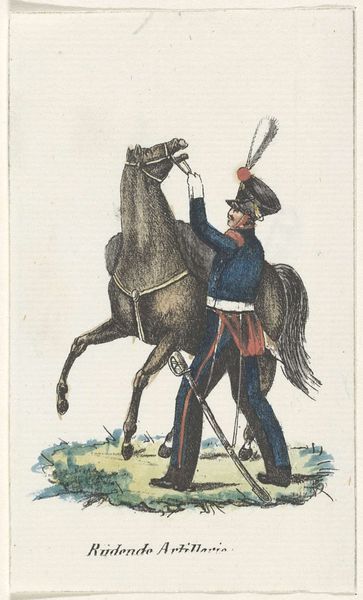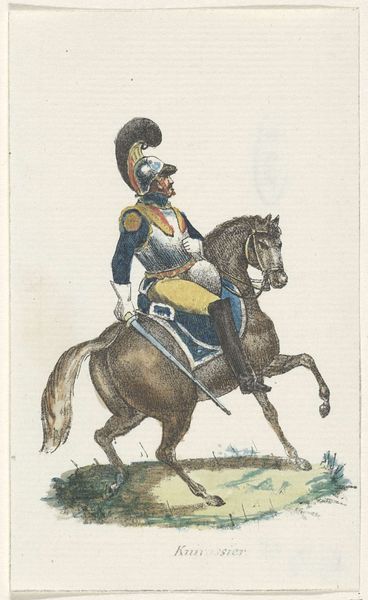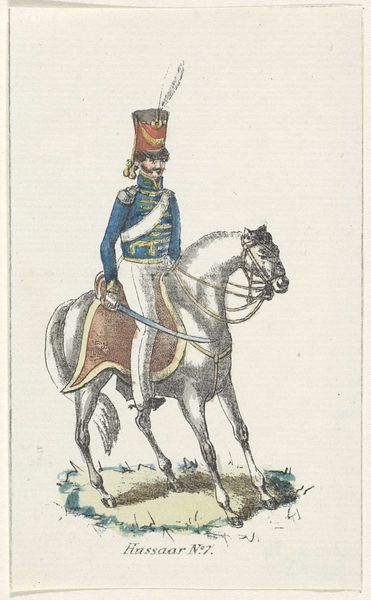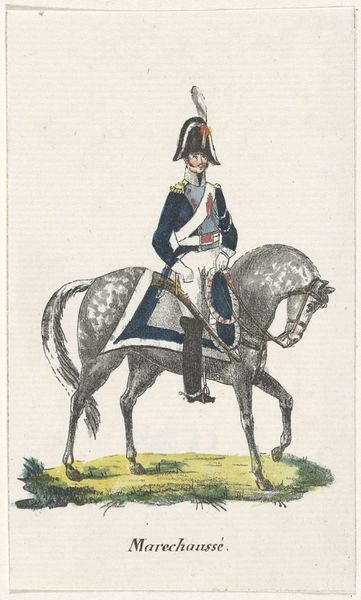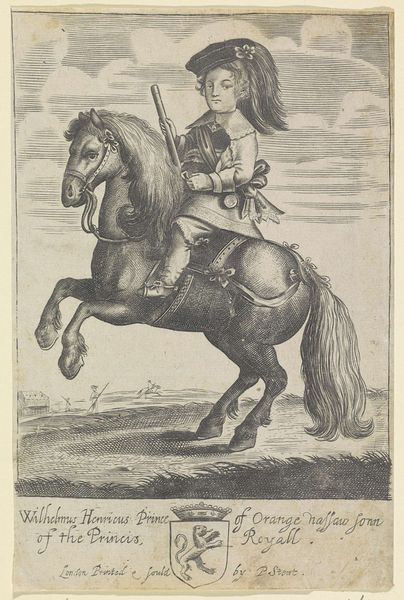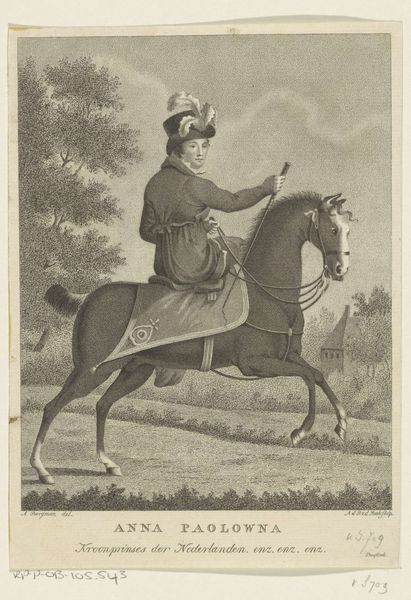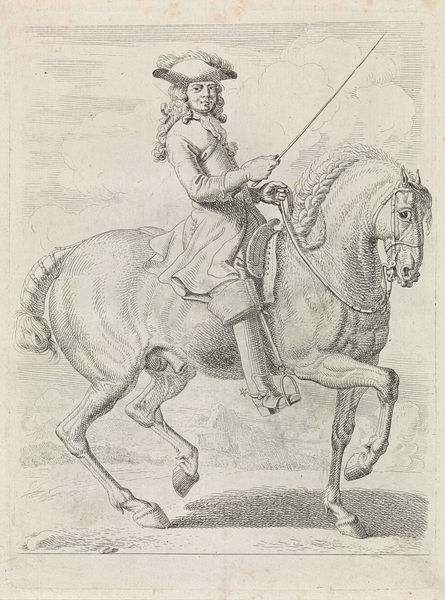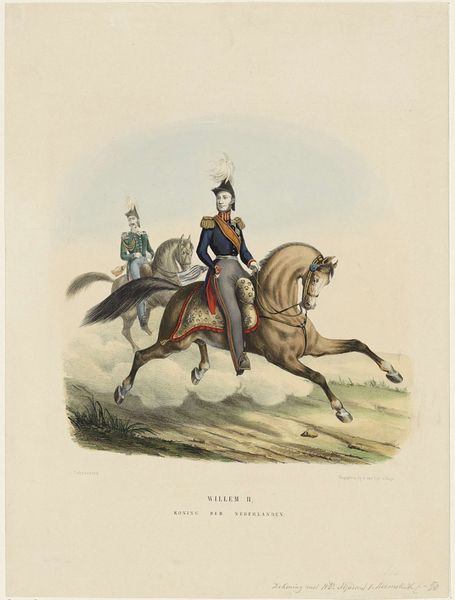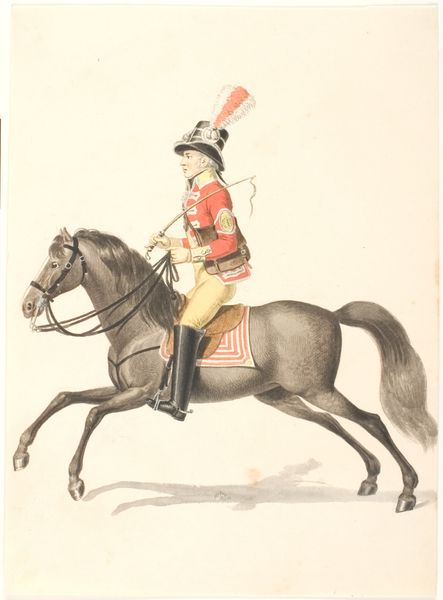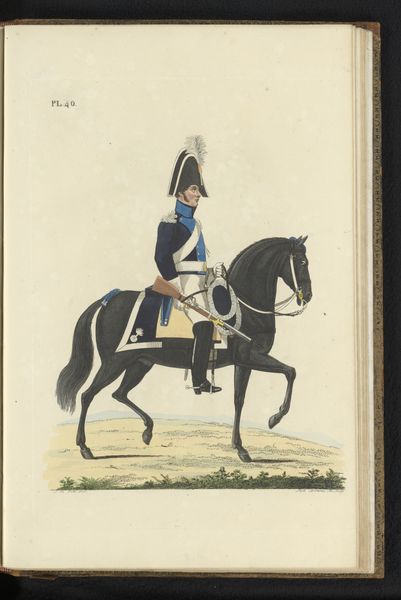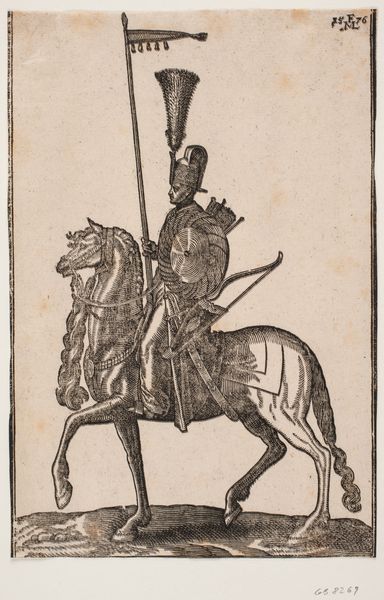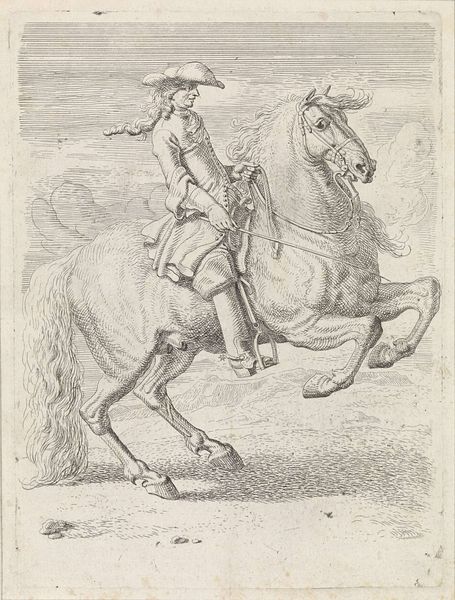
print, watercolor
#
portrait
# print
#
watercolor
#
romanticism
#
costume
#
sketchbook drawing
#
watercolour illustration
#
genre-painting
#
history-painting
Dimensions: height 113 mm, width 68 mm
Copyright: Rijks Museum: Open Domain
Curator: What we're looking at now is "Lansier", an intriguing piece created sometime between 1830 and 1835 by Willem Charles Magnenat, currently residing here at the Rijksmuseum. It's primarily watercolor, part of a print series, offering a window into a specific moment in military fashion. Editor: Oh, hello! The color palette has a dreamy quality about it, muted almost like it has a soft hazy atmosphere. The rider’s stance looks…precarious? He seems more ornamental than ready for battle. Curator: Precisely! It embodies that Romantic ideal of the heroic figure, more concerned with presenting a picturesque image than gritty reality. The meticulous detail in his uniform—the cut of the jacket, the placement of the sash—suggests a keen awareness of the materials used. And then consider that plume on the top hat... Editor: It really begs the question of where Magnenat would have sourced some of those exotic materials. You know, thinking about trade routes of the era. These fancy accessories are linked to the world economic stage in all kind of complicated ways. Was that plumage locally produced or did someone labor across seas to produce them for the enjoyment of the Dutch? Curator: Absolutely. What's fascinating, I think, is that the "Lansier" doesn’t seem to belong to any single historical event. This figure represents a more idealized notion of the lancer. It allows the artist to freely depict the style without necessarily getting bogged down in the politics or the specific uniforms worn during a campaign. Editor: So you are telling me that this idealized approach glosses over the labor behind crafting all those lovely things. Even something that looks “historical” can have all sorts of political baggage we need to unpack if we examine it as an object and trace its history. What kind of processes was employed in printmaking for this picture and how was it disseminated? Who could even afford something like this? Curator: That's a really vital point – looking at art beyond aesthetics! The interplay between image and accessibility really affects its social impact, the democratization or elitism of art... Editor: Well said. Makes you consider the cost of romanticizing even historical figures, right? Curator: I agree. It reminds us to really question those picturesque depictions of history, and examine what went into even making them a reality.
Comments
No comments
Be the first to comment and join the conversation on the ultimate creative platform.

